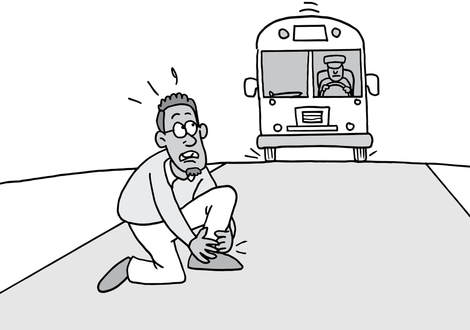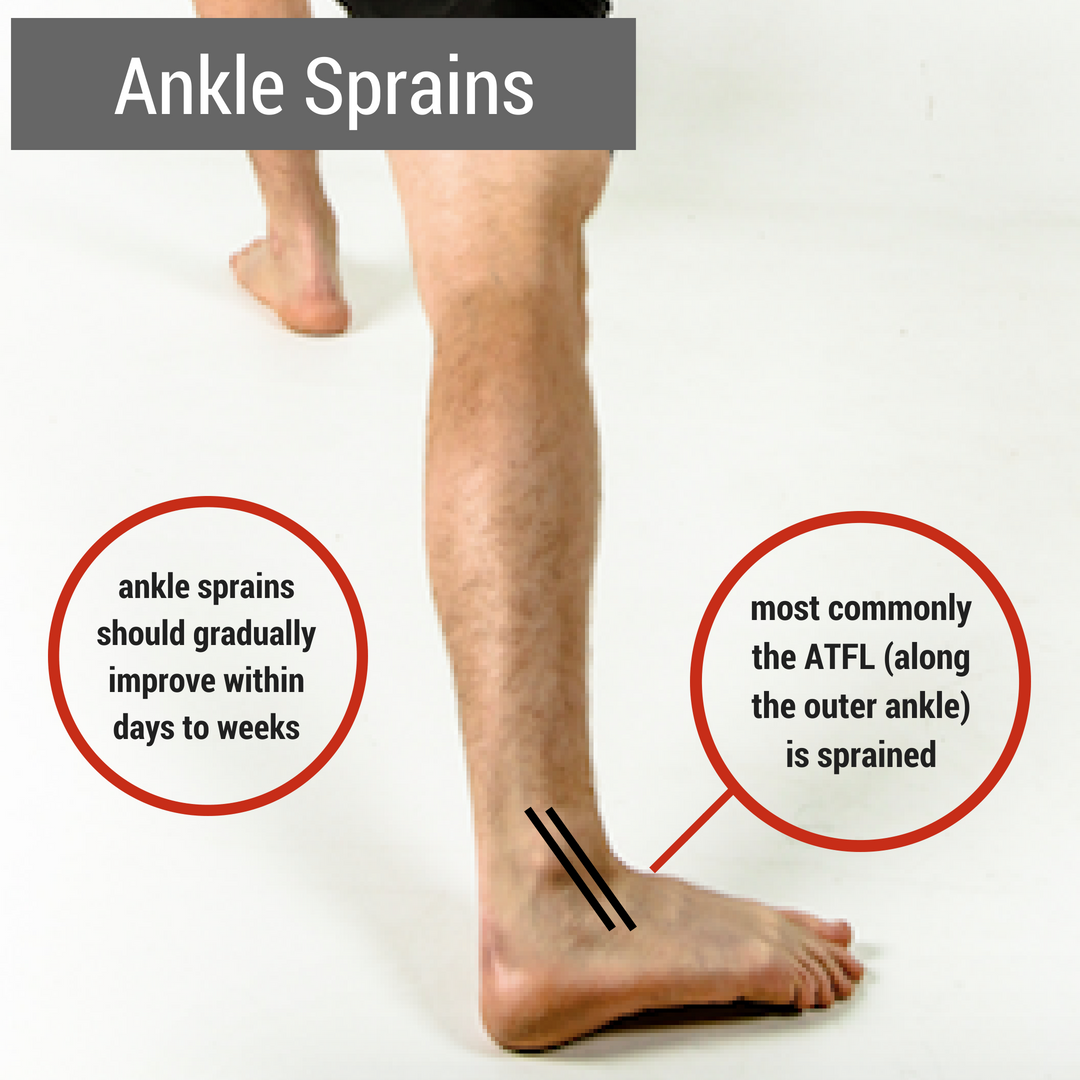Foot & Ankle Joint Overview
Foot & Ankle Pain

The foot and ankle is designed for movement. When ankle motion is limited, it changes how efficiently the ankle can move. A major cause of limited ankle movement is tightness in the calf muscles. If the calf muscles are tight, other structures—including the plantar fascia or achilles tendon—may absorb extra stress. These structures can only tolerate extra stress for a certain period of time before it becomes aggravated. When in doubt, keeping the ankle moving can help minimize the risk of foot and ankle pain.
Something else to consider: The context of a painful scenario plays an integral role in the degree and intensity of the intensity of pain experienced. For example, imagine you roll your ankle while crossing the street. Suddenly, you hear the blare of a horn. Looking up, you see a speeding bus careening toward you. You jump up and sprint across the street to safety, narrowly missed by the oncoming bus. Adrenaline rushing and relief setting in, you realize your ankle feels surprisingly strong - but with each step you take down the sidewalk, the ankle pain returns. The injury was present, but due to the context, you did not feel the pain.
In this story, the brain decreased the perceived threat of ankle pain due to an even greater threat. Remember, the brain can both increase and decrease the amount of pain you experience based solely on context and expectations versus any tissue damage you may have with an injury.
Something else to consider: The context of a painful scenario plays an integral role in the degree and intensity of the intensity of pain experienced. For example, imagine you roll your ankle while crossing the street. Suddenly, you hear the blare of a horn. Looking up, you see a speeding bus careening toward you. You jump up and sprint across the street to safety, narrowly missed by the oncoming bus. Adrenaline rushing and relief setting in, you realize your ankle feels surprisingly strong - but with each step you take down the sidewalk, the ankle pain returns. The injury was present, but due to the context, you did not feel the pain.
In this story, the brain decreased the perceived threat of ankle pain due to an even greater threat. Remember, the brain can both increase and decrease the amount of pain you experience based solely on context and expectations versus any tissue damage you may have with an injury.
Ankle Sprains
|
Ankle sprains often involve the ligaments on the outer ankle, most commonly the Anterior Talofibular (ATFL) ligament. These ligaments are important for providing strength and stability of the foot and ankle region. During an ankle sprain ("roll your ankle"), the ligaments undergo a quick stretch
Why does it occur?
Ankle Injury: What to do
|









